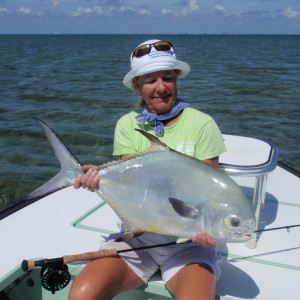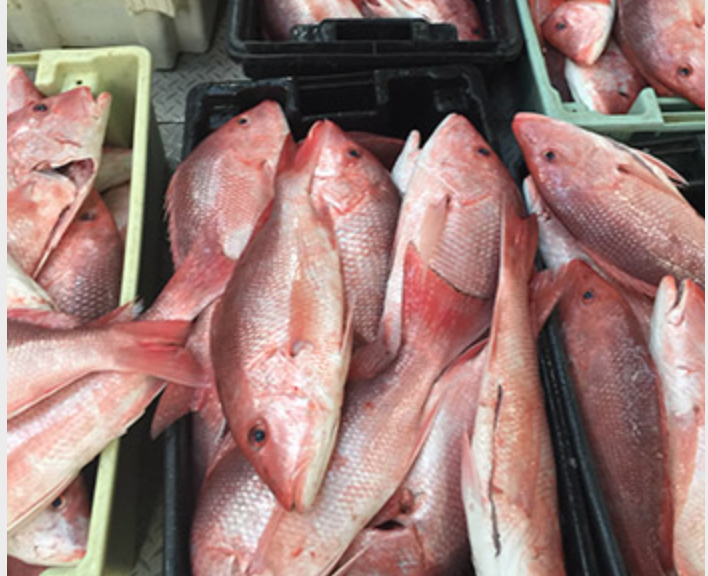Fishermen say red snapper is recovered, and a healthy annual catch limit of almost 7 million pounds came along with ex-vessel prices at $5 to $6 per pound.
But it was not so rosy elsewhere in Gulf fisheries, as Mississippi River wreaked high-water havoc, and coronavirus undercut Keys lobster fishermen.
WINNERS
Red snapper: The Gulf of Mexico red snapper fishery continues to be stable and strong, with ex-vessel prices running between $5 and $6 per pound and plenty of available stock to fulfill the annual catch limit of nearly 7 million pounds. NMFS is moving toward giving Florida, Alabama, Louisiana, Mississippi and Texas permanent control over their quotas for the gulf recreational fishery, which is expected to curb that sector’s overfishing of the species. However, the situation is not quite as rosy in the South Atlantic where the commercial harvest season is only about 60 days long, with a 75-pound trip limit and 125,000-pound catch limit. Dock prices in 2019 were running about $6.75 per pound. Fishermen insist the stock is fully rebuilt and say they could accept slightly lower prices if the season were extended. But federal fisheries managers don’t seem inclined to lift restrictions that have been in place since 2009.
LOSERS
Flounder: A team of fisheries researchers who studied Southern flounder in north Florida, Georgia, South Carolina and North Carolina in 2019 found the stock had plunged to historically low levels as a result of decades of overfishing. North Carolina reacted by immediately closing both commercial and recreational fisheries and imposing 45-day fishing seasons in 2020, with the goal of rebuilding the stock within ten years. Other states may follow suit. Prior to those developments, 2018 South Atlantic southern flounder landings totaled more than 950,000 pounds valued at nearly $4 million.
Oysters: Gulf of Mexico oyster fishermen are still reeling from last spring’s record Mississippi River flooding which caused 100 percent mortality at some public and private grounds in Louisiana and Mississippi. Louisiana, which accounts for 75 percent of the gulf and 34 percent of the national harvest, is transplanting adult oysters in the affected waters and hoping for a break from being inundated again this spring. Landings for 2019 were about 6 million pounds — about half the historical average — while prices shot up to $80 per sack — nearly four times the average price of 10 years ago. Restaurants are stuck charging as much as $20 per dozen for small oysters coming in from Texas, and consumers are balking.
Stone crab: Persistent red tides and hangovers from recent hurricanes that scoured the bay bottom sent Florida’s 2019-20 stone crab production into a tailspin with near-record low landings so far and stratospheric prices. Since the season opened in mid-October, landings are estimated at 1.4 million pounds — on track with 2019’s dismal 1.9 million pounds at season’s end in mid-May. Florida’s stone crab working group — made up of fishermen, scientists and resource managers — is proposing a suite of options aimed at rebuilding the declining stock by 1 million pounds over the next five years. Among those proposals: shortening the harvest season; increasing the minimum size for claws; imposing mandatory cull rings on traps within three years to select for legal-sized claws; and reducing the number of trap certificates issued by 10 percent for one year. Boat prices range from $25 per pound for the largest claws down to about $11.50 for the smallest.
Swordfish: Foreign imports combined with a robust swordfish population are holding prices down for U.S.-caught product from the North Atlantic and Gulf of Mexico. Total landings (commercial and recreational) for 2019 were about 925 metric tons (dressed weight) — up from about 718 metric tons in 2018. Still, U.S. fishermen are fulfilling only about 30 percent of their quota while foreign fleets happily catch their allotments and flood U.S. markets with cheaper fish. With ex-vessel prices as low as $3.50 per pound, some say the U.S. fishery is unsustainable.
Shrimp: With 2019 gulf shrimp landings estimated at about 75 million pounds — (nearly 33 percent below the historical average of 111 million pounds) — fishermen are hoping the Mississippi will refrain from flooding this spring and summer and that cheap imports won’t drive prices for U.S. product any lower. One bright spot: Boat prices for the largest gulf shrimp (about $9.23 for U15) were higher than the previous year. For 23/30 count, the average was about $3.50; the smallest (41/50) stayed around $2. Industry leaders are urging U.S. regulators to step up enforcement against illegal imports of farmed shrimp produced by slave labor and laden with chemicals.
Blue crab: Gulf blue crab stocks were hit hard by the spring 2019 flooding, particularly in Mississippi where landings — which had been increasing over the previous five years — were down an average of 26 percent to as much as 84 percent in some basins.
Meanwhile, in the South Atlantic, North Carolina resource managers declared blue crab overfished and announced cutbacks aimed at ending overfishing and rebuilding the stock.
Measures include imposing closed seasons; establishing sanctuary areas; banning the harvest of immature females; and implementing new size limits for mature females — among other restrictions. Blue crab is one of the state’s most valuable fisheries, with previous annual landings of more than 27 million pounds worth more than $26 million.
ONES TO WATCH
Lobster: Harvest levels for spiny lobster in the Florida Keys — which account for 80 percent of Florida’s production — are a little down for the 2019-20 season, which ends March 31. With estimated landings so far of 2.7 million pounds, the season is not expected to exceed 2018-19’s healthy total of 6.5 million pounds. The ongoing trade skirmish with China depressed prices for whole, live product by about $2 per pound to an average of $8.50, but the outbreak of coronavirus virtually shut down the usual peak market around the Chinese lunar new year in early 2020. Meanwhile domestic prices (iced tails) are hovering right around the historical average of $7.78. Industry members are concerned about poor water quality in the Middle Keys that could affect recruitment and the possibility of a federal closure of the lobster-rich waters of Pulley Ridge in the gulf off the Dry Tortugas.
Yellowfin Tuna: The outlook is hopeful for the gulf this spring with the early arrival of good numbers of fish in the 110-140-pound range and the possibility that federal area closures imposed to protect bluefins may be lifted. Harvest levels for 2019 were flat compared with the previous year; ex-vessel prices hovered between $5 and $6.75 per pound, depending on the influx of imports from Southeast Asia, South America and the Caribbean. Stepped up production and aggressive marketing of the superior quality of gulf yellowfin could help tilt the balance.







